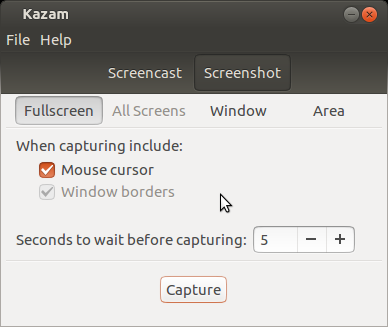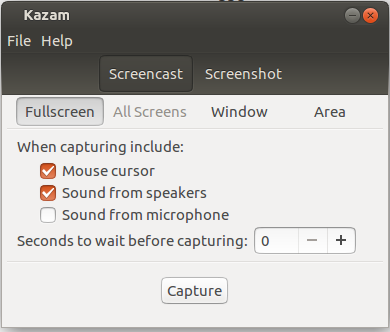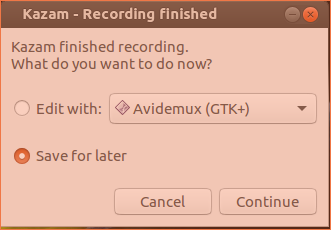Passwords and Keys
Introduction
It is not at all a good idea to use the same password on all the websites you have accounts in. If that one password get leaked somehow, then all your online accounts are at risk. So it is a good practice to have unique passwords for every online account. But when you have very many passwords, it becomes difficult to memorize and recall all of them when you need them. Usually, people write down their passwords somewhere, either on paper on on their mobile/desktop computer. But this is also risky because you can easily lose the piece of paper or the document on your computer or they can fall into the wrong hands. So what do you do then?
Password manager software offer a solution to this problem of safely storing your passwords. Password manager software can help securely store secret information like passwords and encryption keys. The Passwords and Keys app, also know as seahorse is a password manager for Linux.
Before You Use this App
The "Passwords and Keys" app works by saving your passwords locally on your desktop computer in a secure, encrypted storage called a 'keyring'. This approach is highly secure because all your passwords are stored locally on your computer and cannot be accessed by anyone over the internet. Moreover, you can 'lock' all your passwords in the app with a 'master password'. HOWEVER, the app has two weaknesses - 1) if you ever lose your computer, you will lose access to all your passwords and have to set them again, and 2) if you forget the master password, even you will not be able to access your passwords in the app.
Note that even if your computer is stolen, your passwords will remain safe since no one else can access the passwords without the master password.
The "Passwords and Keys" app is called an offline password manager because it stores all your passwords on your computer. There are also online password manager software services that you can use. Online password managers store your passwords on a server computer. The advantage of such software is you won't lose your passwords even if your computer is no longer available to you. HOWEVER, remember that when you use an online password manager, you are storing all your passwords on someone's else's server computer!
Basic information
| ICT Competency | The "Passwords and Keys" app, also known as Seahorse, is a password manager and keyring management application. It is used for managing passwords, encryption keys, and security certificates (SSL/TLS) on your Linux desktop environment. |
| Educational application and relevance | No direct application. Teachers who register and create online accounts to access educational content can use this application to securely store their login passwords. |
| Version | Passwords and Keys (or) Seahorse 41 |
| Other similar applications | KeypassXC, pass |
| Development and community help | Seahorse GNOME app page, Seahorse GNOME help page |
Overview of features
Installation
For Ubuntu OS
- The application is part of the Ubuntu custom distribution.
- In case you do not find it on your computer, you can install it through the terminal by following the steps below:
- Open terminal by clicking "Applications --> System Tools --> Terminal" or through Keyboard shortcut
Ctrl+Alt+T - In the terminal window, type below command and press enter to start the installation by providing your machine password:
sudo apt-get install seahorse
- Open terminal by clicking "Applications --> System Tools --> Terminal" or through Keyboard shortcut
Working with the application
Creating a keyring
Go to Accessories-->Passwords and Keys to open the application.When you open the application, it will be empty to begin with. On the left, you will see an entry called "Login". This is a keyring created by the system by default. Ignore this.
In the following steps, you will create a new keyring to store all your passwords in, create a master password for the keyring and then start adding individual passwords to the key ring.
- On the top left, click on the "+" icon.
- Select the option "Password keyring"
- A pop-up window with the title "Add password keyring" appears.
- Enter a name for the keyring. For example, you can call it "Work" or "Personal". This keyring will be created as an encrypted file in your computer. Here, a keyring called "Work" has been created as an example.
- Click on "Add" to create the keyring.
- The keyring gets created and you will immediately be prompted to set a master password for the keyring.
- Enter a master password and click "Continue". Use a password that is difficult to guess for others, but is easy for you to remember.
NOTE: You also have the option of not setting a master password for the keyring. You can leave the password field blank and click "Continue". If you do, your keyring will not have password protection. You will see a warning message on the screen.
- Your keyring will now be created. In this example, the keyring "Work" will get created and will appear below the default "Login" keyring.
- Set your new keyring as the default keyring for all your passwords by right clicking on the keyring and selecting the "set as default" option. See screenshot.
- See also the option "Change password". If you ever want to change your master password for the keyring, use this option.
Adding a password to the keyring
- Click on the "+" icon on the top left of the application
- Select the option "Password"
After user opens kazam from menu, just click on the Screenshot option to take capture your computer screen as image. Here user can take screenshot in three modes like full screen, select window and select area. Users can choose
- Fullscreen when they want to take full computer screen as Screenshot, they can choose (include top and buttom panel of your Ubuntu.
- Window when they want to take current window
- Area when they want particular area in the screen.
If users choose Area option, they have to drag cursor along particular area. Also users can choose whether to keep their Mouse cursor in their Screenshot and can choose to set capturing delay by few seconds before they actually start their Screenshot.
NOTE:- These options are same for both Screenshot and Screencast.
Saving screenshot
After selecting above options users can click on Capture to take Screenshot.
It will prompt users to choose location for save your screenshot. Users can also change the file name before saving.
Getting start with Screen casting your computer screen
This works similar to Screenshot except that it helps users to record their computer screens along with audio and save them as videos.
Here also users can choose whether to keep their Mouse cursor in their Screencast recording, also they can choose to record Sounds from speakers (computer audio output) and Sounds from microphone (record users input through microphone) in their recording which will help users to use their own voice or music from other sources. Also users can choose to set capturing delay by few seconds before they actually start their recording.
After selecting above options users can click on Capture to begin Screencast.
Saving/exporting screencast
After recording a screen, users can click on Finish recording which will prompt users to choose edit it further using any video editing tools or to Save for later to save this video in computer.
Now users can change the project name before saving the project in their desired destination. Now project will be saved as video. This project can again be used later.
Video on how how to use Kazam
Ideas for resource creation
- This is very useful for creating simple video/screenshot resources by adding narration to a process being done using an application. For example, you can run a simulation on your screen or an image slide show and add your narration to it as the application runs.
- You can also use an existing video and dub it in another language
- Please make sure that in both (1) and (2) the original visual resource/ video is licensed for reuse with modification.










